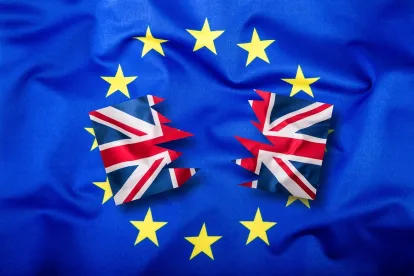Today, 29 March 2019, was planned to be Brexit day: the UK would leave the EU at 23:00 GMT. That plan has had to be abandoned and Brexit day postponed to 12 April 2019. It may be pushed back even further.
How did the UK end up here?
The UK’s EU withdrawal terms, agreed in draft between the EU and UK in November 2018, were rejected by the UK Parliament – not once, but twice, in January and February. There would clearly not have been enough time to try for a third time before Brexit day, so last week UK Prime Minister Theresa May negotiated further timings with the EU. The EU agreed that if the draft withdrawal terms were approved by the UK Parliament when put to a vote for the third time, Brexit day would change to 22 May. If, on the other hand, the terms were rejected again, there would be an extension to 12 April, and UK would have to present an alternative plan to the EU for consideration before that date.
The draft terms were rejected for a third time this afternoon.
The UK government must now find an alternative plan that is approved by a majority in the UK Parliament and submit it to the EU before 12 April 2019. That sounds simple enough, but the diversity of views in the UK Parliament has so far failed to generate consensus on anything other than rejection of a no-deal Brexit; Parliamentarians agreed in one of a series of “indicative” votes (not binding on the UK government) on 27 March that it would be damaging to the UK to exit the EU without any terms, but also failed to agree on any alternatives. There will be a further series of indicative votes in Parliament on 1 April in an attempt to identify consensus on the way forward. If no consensus emerges by 12 April, the only apparent option for the UK would be the one MPs have already agreed to reject – to leave the EU with no deal.
So what other options might be put forward to the EU? Those mooted so far are (1) a fourth vote on the draft withdrawal terms (but a vote seems unlikely given the extent of rejection), (2) negotiation of alternative withdrawal terms (a change of prime minister would likely be needed first), (3) a second referendum, (4) a general election, or (5) staying in the EU. How these are viewed by Parliament will be clearer on 1 April, but whether the EU will accept any of the first four as justification for a further extension remains to be seen. Although EU officials have indicated a willingness to postpone Brexit day for months – after all, a no-deal Brexit is not in the EU’s interests either – patience is wearing thin, as shown in the Commission’s reaction to the UK Parliament’s vote this afternoon. In a statement issued just after the vote, it said that a no-deal Brexit on 12 April is now a likely scenario.






 />i
/>i
